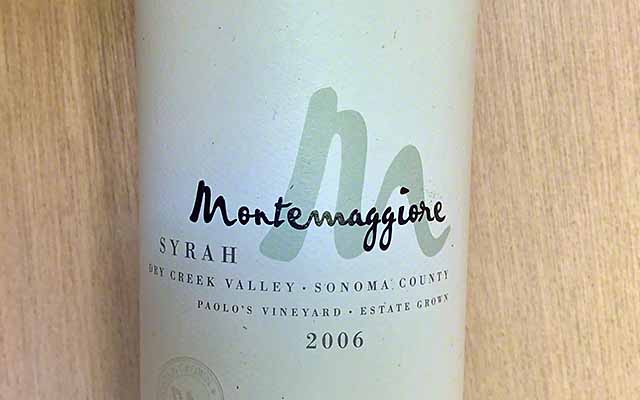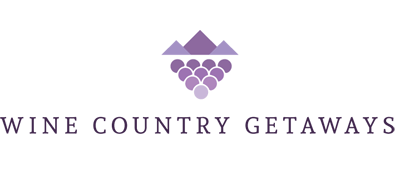Guest post by Lise Ciolino: Lise Ciolino and Vince Ciolino are the owners of Montemaggiore winery in the Dry Creek Valley. Lise is the winemaker, while Vince tends to the work in the vineyards. In this guest post, Lise gives us a very thorough and practical explanation of reading and deciphering a wine label. This a repost on Wine Country Getaways.

How to read a wine label
Have you ever wondered what “Reserve” really means on a wine label? What about “Estate” and “2008”? You may be surprised to learn that “Reserve” is meaningless, “Estate” is meaningful only when joined with the word “Bottled”, and although “2008” has a well-defined meaning, it’s not what you think!
The federal government regulates wine labels in order to prevent consumer deception, yet some of their rules are quite obfuscating. Understanding these non-intuitive rules can, however, clarify matters.
The most important rules to remember are the 75-85-95% rules:
- “Syrah” (or any other varietal means the wine is at least 75% of that grape variety
- “Dry Creek Valley” (or any other American Viticultural Area) means the grapes were at least 85% from that geographic region
- “2008” (or any other vintage) means that at least 95% of the grapes were harvested that particular year
But why would a winery want to produce a wine that is anything but 100% of all those? The simple reason is economics. The most highly prized wines tend to be (a) single varietals (“Syrah” sounds higher quality than “Red Wine”), (b) from the most precise AVAs (Dry Creek Valley wine is more valuable than California wine), and (c) of a particular vintage (Champagne and Port are the only wines that can get away with NV or non-vintage). But having some leeway to legally be less than 100% of each is useful to wineries—so let’s see exactly how.
The 75% varietal rule allows wineries to market their wine as a “single varietal” yet benefit from bottling a higher quality wine that is a blend. You probably already appreciate the complexity of blended wines (e.g., Montemaggiore’s Cabernet and Syrah blend) and certainly Europeans have for centuries. But wine marketing in the United States focuses on varietals—wine shops, wine lists, and wine websites are all organized by grape variety. Blends fall into the “other” category, which doesn’t receive as many eyeballs—and can be harder to sell. Coincidentally, Montemaggiore’s Syrah is our only varietally labeled wine (and it’s 100% Syrah), while our Rosé, Reserve, Nobile, and 3Divas utilize fanciful names. We also provide the exact varietal mix of those wines on the front label (although we’re not required to do so).
The 85% American Viticultural Area (AVA) rule also allows wineries to have the best of both worlds because the most precise AVAs command the most respect. AVAs are hierarchical with the Dry Creek Valley AVA being inside the Sonoma County AVA, which is inside the California AVA. A winemaker may want to blend the same varietal from different AVAs to increase complexity, or may want to blend varietals that grow best in different AVAs. For example, Montemaggiore will soon be releasing our Syrafina which is 97% Syrah from Dry Creek Valley and 3% Viognier from Russian River Valley because these varietals can do really well in different growing conditions. We legally labeled this as both “Dry Creek Valley” and “Sonoma County”, which actually provides both the (majority) precise AVA and the (100%) encompassing Sonoma County AVA.
The 95% vintage rule is one which Montemaggiore makes use of periodically. For example, 2005 was a cooler vintage and our Syrah didn’t quite have the balance of blackberry, blueberry, and cherry flavors that Lise enjoys, so just before bottling she blended in 5% Syrah from 2006 (a warmer vintage) which gave the wines a boost of fruit.
Aside from the 75-85-95% rules, two other rules are good to know
A vineyard designate such as”Paolo’s Vineyard” must be 95% from that vineyard. But what is a vineyard? Does it have to be contiguous, of small size, or unique in some way? As it turns out, no. There is no concrete definition for “vineyard”!
A wine that is “Estate Bottled” must be 100% estate-grown, fermented, aged, and bottled. That’s not obvious! And what is an “estate”? One might think that it’s a relatively small contiguous property owned by the winery. But in fact the only rule is that the vines be “controlled” by the bottling winery. And what does “Estate Wine” mean? Absolutely nothing… or absolutely anything!
Equally confounding are other terms that have no legal definition, of which “Reserve” is perhaps the most abused. Montemaggiore, for example, made a reserve wine in 2004 and 2007 because those were exceptional vintages that made an exceptional wine. But other wineries make reserve wines every year, and some even label every single bottle as a reserve. “Barrel fermented” and “old vine” also lie in this category of undefined and potentially obfuscating terms.
As you can see, there’s very little that’s black and white on a wine label! Perhaps now, however, you will be better at judging a wine by its label.

